
10 Dec Journeys in Print: Travelling Patterns
by V. Geetha
Travelling Patterns is the latest in a line of books that engage with textiles and textile art. It is a unique visual assemblage—in which pattern-making travels from textile to paper, from the decorative to the narrative, and from one context to another.
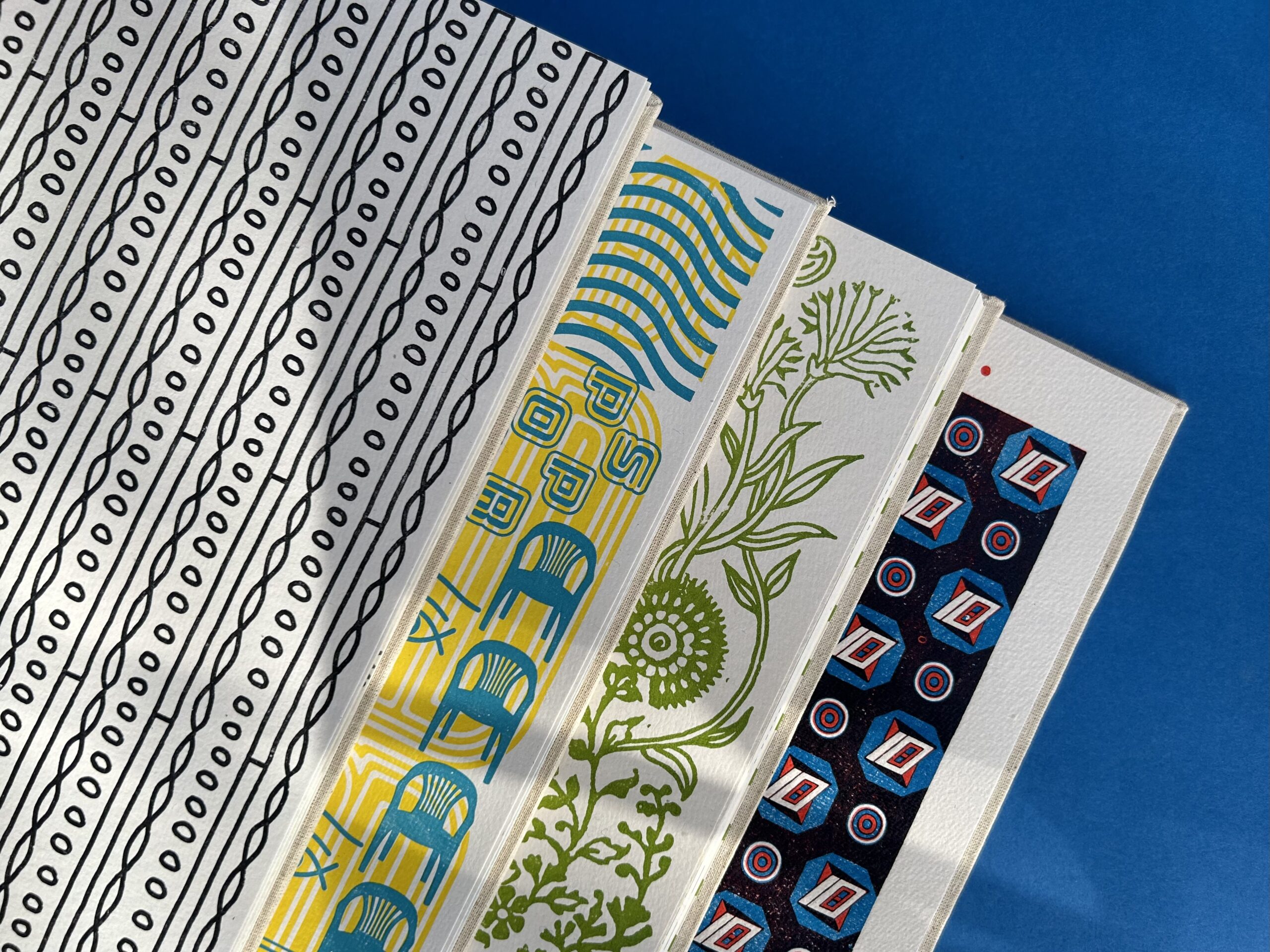
The book emerged out of an intent and a workshop. Dr Katharina Gorgen of the Goethe Institut, Chennai wanted to explore the possibilities of working with contemporary artists and designers from India and Germany, on a project that would rework traditional patterns, found in an array of objects: textiles, jewellery, ceramics, monuments… we were called in as a potential publishing partner and the heritage museum, Dakshinachitra, as a possible exhibition host.
Since we had worked with textile block-makers from the coastal town of Masulipatnam in the past— for our textile book, The Cloth of the Mother Goddess—we suggested that we focus on the patterns created by them. For us, this appeared an exciting prospect, and for two reasons.
For one, since we began publishing, we had been drawn to textile art. An early title, The Art of Survival, featured female quilting cultures of resistance from across the world. We had plans to do a cloth book for children in the late 1990s. The book was to feature Kalamkari art, and we thought we would communicate its special features by block printing on cloth. For various reasons, we did not do that cloth book and instead, it was published as an offset printed book—Mangoes and Bananas—whose design simulates the texture of cloth.
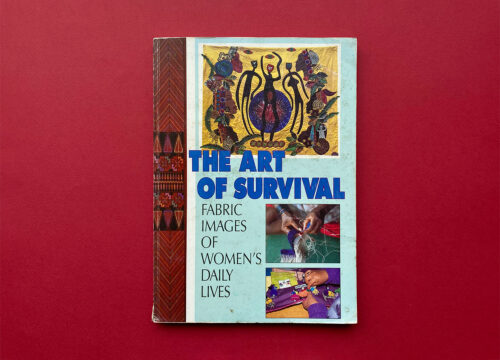
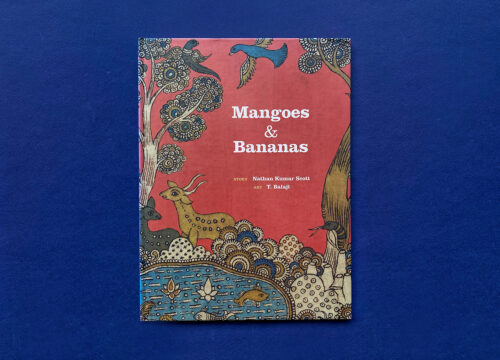
Early experiments with textile art in bookmaking
But we did do a book that had a cloth spine: this was Excuse Me, Is This India? For this book, Anita Leutwiler, a quilt maker from Switzerland, had created exquisite small quilts, depicting life on Chennai’s streets and shops. She had made these using disparate pieces of cloth she collected when in Chennai city, including from some of us at Tara Books. Since we wanted the form of the book to reflect its textile content, we decided to bind the cover, as books in the past did, with a cloth spine.
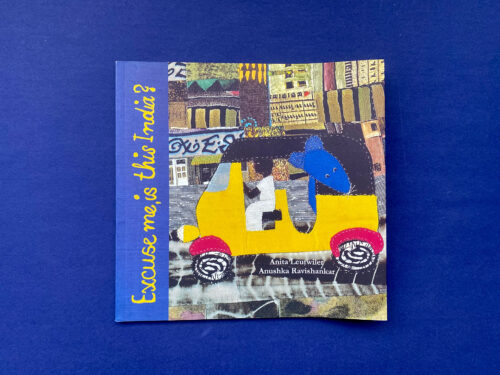
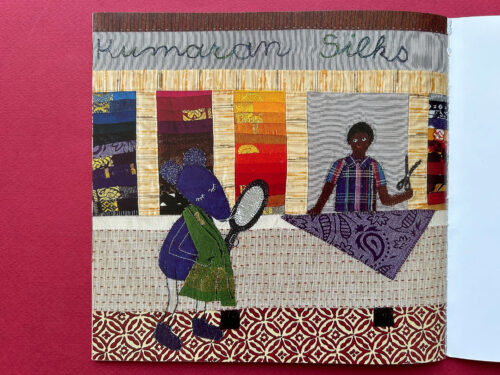
Pieced together: Excuse Me, Is This India?
Years later, we published The Cloth of the Mother Goddess, featuring the work of Jagdish Chitara. A tribute to the artisans who create Mata-ni-pachedi, a votive cloth offering, the book comprises images created through block printing on cloth, accompanied by a fable that places the art in perspective.
Anaïs Beaulieu’s A Stitch Out of Time was our next textile project: with photographs of delicately embroidered plants on sheets of cheap black plastic, the book contrasts the slow and careful time of plants with the rushed economy of consumption and waste.

Photography, threadwork and text combine in A Stitch Out of Time
The second reason that the patterns project interested us had to do with the Masulipatnam block-makers. They are part of a cultural milieu that has existed for over 400 years, and it seemed to us that the patterns they create embody a rich history. For one, the patterns are not specific to their part of the coast, nor are they only influenced by art forms from Southern India. Since they created textile blocks for a global textile trade, they had incorporated into their art motifs and patterns from North-west India, West Asia, South-east Asia, and Europe. This hybridity, we thought, would be an enabling context for contemporary artists/designers—they could draw from the past, but also add their own to a complex lineage.
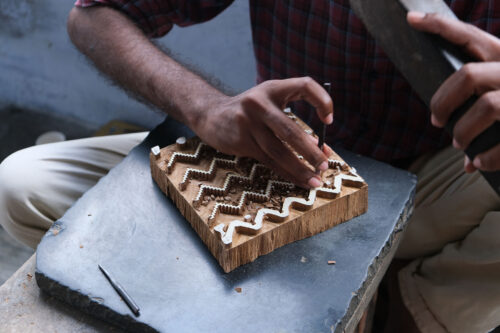
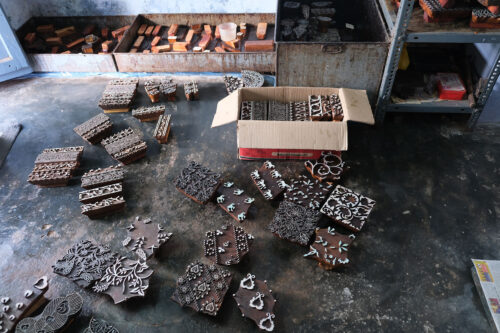
Blocks made by hand in Masulipatnam
In order to get the project going, along with Goethe Institut and Dakshinachitra, we organised a week-long workshop, in which we discussed various aspects of textile art, the patterns that feature in them, and the ways in which these were appropriated for commercial use and exploitation during the colonial times. For many of us, the important question was: how might we draw on a tradition, which is not static, but yet distinctive, without appropriating its content and influence?

Conversations and demonstrations during the workshop
The artists/designers who participated in this project were as keen as we were in addressing this dilemma, through the means available to them. The two Indian participants, Aditi Jain and Ruchi Shah were not unfamiliar with textile art. Aditi had worked with weavers’ groups in Tamil Nadu, and Ruchi, being a design student, knew of Indian textile patterns and motifs. For Verena Gerlach and Henning Wagenbreth from Germany, this was new ground, in that they did not know the details of Indian textile history and the aesthetics that had shaped it. But Verena, a graphic designer who focuses on typography, and Henning, an illustrator inspired by popular art and craft, know of, and have deployed formal and decorative elements in their design and art.
Eventually the four artists/designers responded, not only to what they had heard and seen. but also to what they could touch, feel and work with. They had the opportunity to examine and test-print traditional patterns on paper, using wooden textile blocks from Masulipatnam. This ‘play’ with motifs and patterns proved useful. They experimented with repetition, and the logic that informed the orientation of patterns in any given instance. They were excited by the interplay of patterns as well, and by the relationship between spaces that separated one motif from the next.
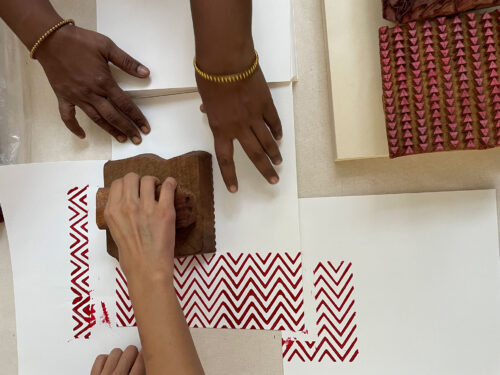
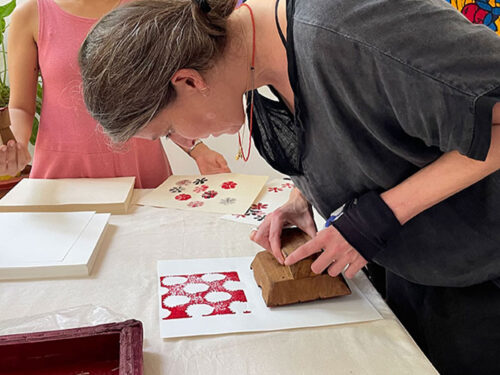
It’s all in the doing: test-prints with the Masulipatnam blocks.
The participants were also curious that we had decided to letterpress print their work. We chose the letterpress because it was the closest to block printing. Both processes indent the printing surface with impressions that bear the influence of the human hand, and this seemed an important consideration. For the artists, the process set constraints, but also urged them to be innovative in how they imagined the interplay of spaces, colours and images. For us, it turned out to be one of the most challenging production processes we have ever undertaken—it is an incredibly complex project to carry out on a letterpress, particularly since the technical expertise for this form of printing is becoming an increasingly endangered art form across the world. We can be justly proud of our production team for achieving this level of printing.

The vintage Heidelberg letterpress at our bookcraft workshop
Each of the artists/designers came up with a visual fable that was rooted in their practice. For example, Ruchi began work by creating a repository of icons and borders and Verena played with pattern and image, creating type out of both. Travelling Patterns holds together four distinct visual narratives.
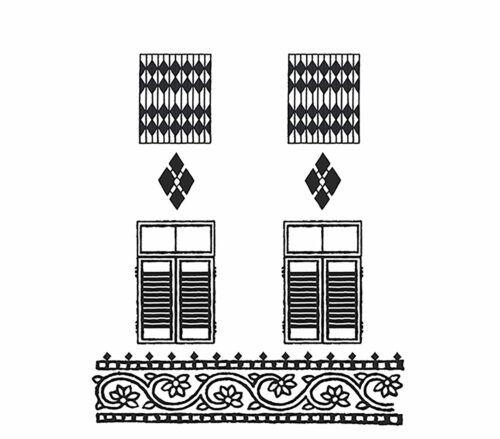
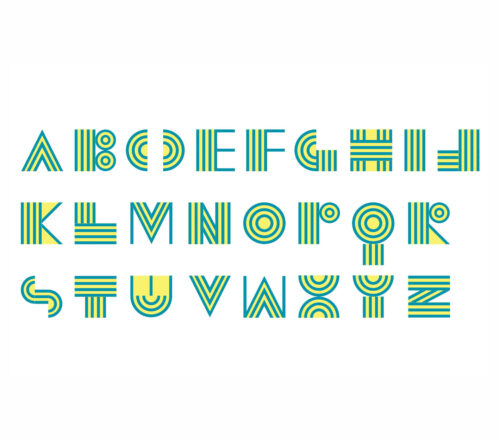
Building blocks: motifs and type from Ruchi and Verena’s archives
Aditi chose to tell a story of weaving, and she used familiar textile motifs as symbols and illustrative elements in doing so.

Aditi Jain’s ‘To Be A Weaver’
Ruchi wanted to deploy traditional floral and geometric patterns to narrate a story to do with climate anxiety—she used them as if they were lego pieces, putting together entire city scenes out of a rich array of lines, curves, circles, squares…

Ruchi Shah’s ‘Blocked By Green’
Verena worked with but also went beyond the spatial logic of textile patterns. She kept with the idea of borders which enfold a central image but she also broke with this practice to create intriguing images of Chennai coastal life. Further, she created type out of patterns, and integrated words into the pictures she created, such that they are both words as well as images. Henning created visual parables of travel, creating cleverly designed borders that frame inset images.
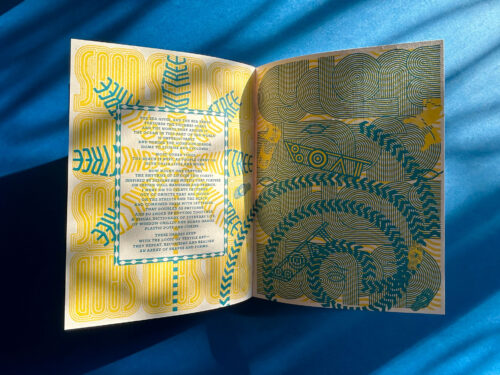
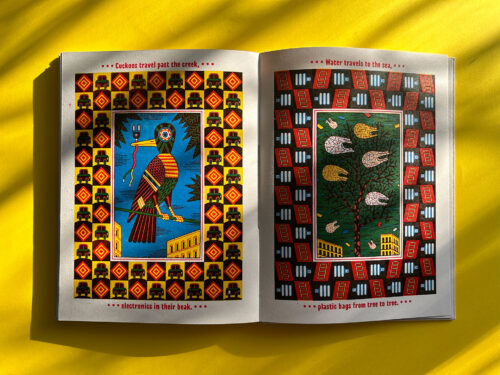
Verena Gerlach’s ‘The Sea Gives And The Sea Takes’ and
Henning Wagenbreth’s ‘Travelling Kaleidoscope’
For us, the four visual narratives, when put together, tell a story of the aesthetic resilience of patterns. Patterns continue to intrigue and inspire because they are frames that hold a story, they anchor as well as convey meaning. As Henning Wagenbreth has put it, a pattern is midway between an image and a word, and in this lies its stunning possibilities.
V. Geetha is a writer, translator, social historian, activist, and a freelance editor and a leading intellectual from Tamil Nadu, India. She has been active in the Indian women’s movement since 1988, organizing workshops and conferences. Geetha has written widely, both in Tamil and English, on gender, popular culture, caste, and politics. Click here to discover Tara Books she has authored.


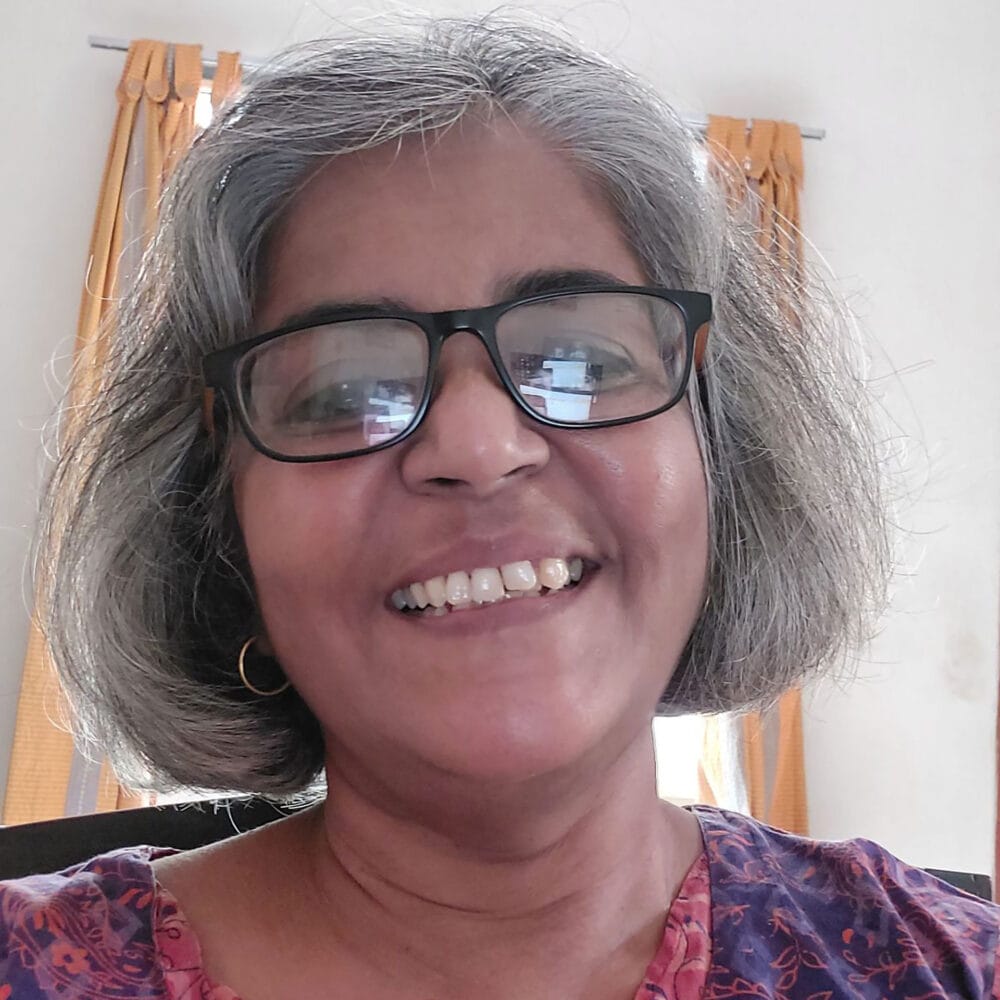
No Comments